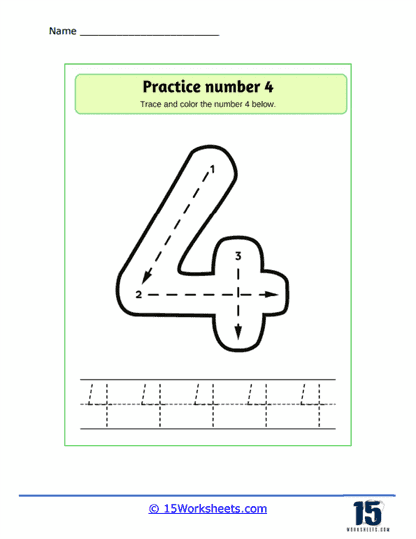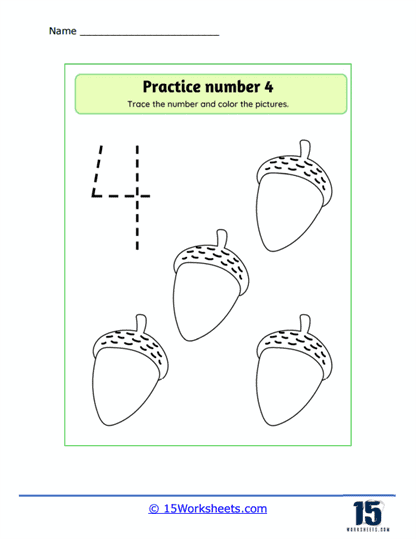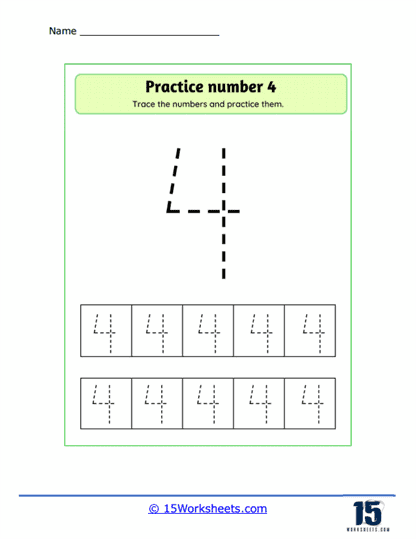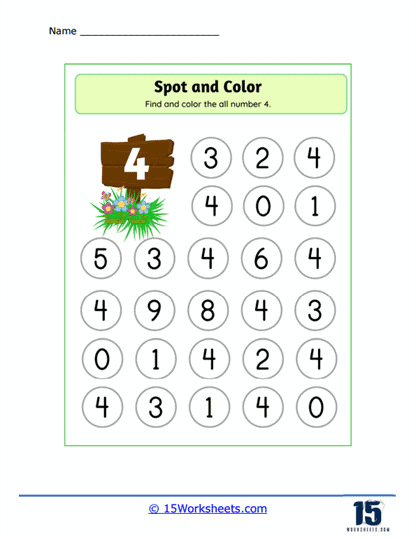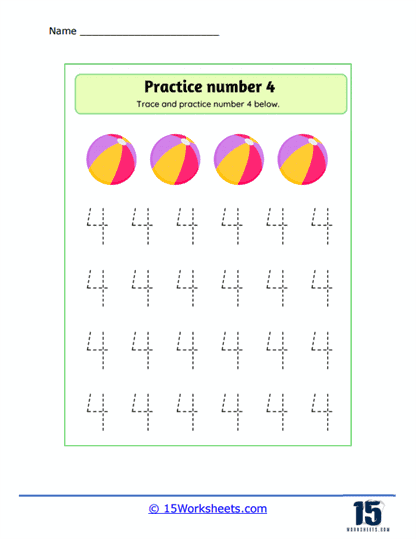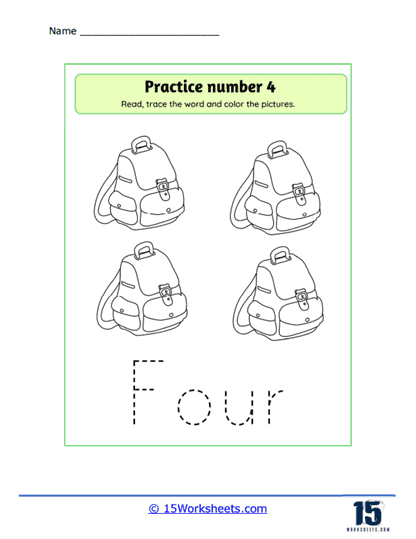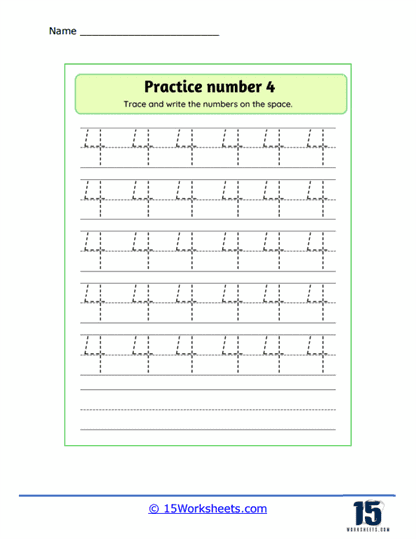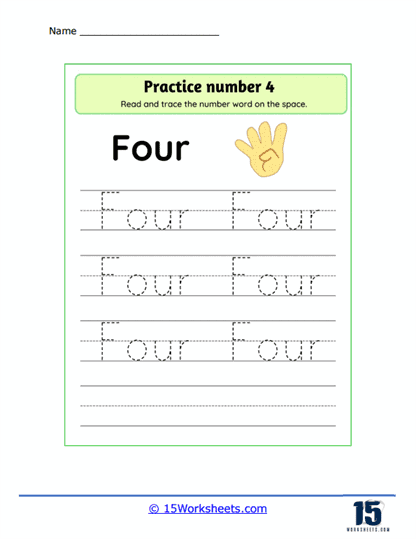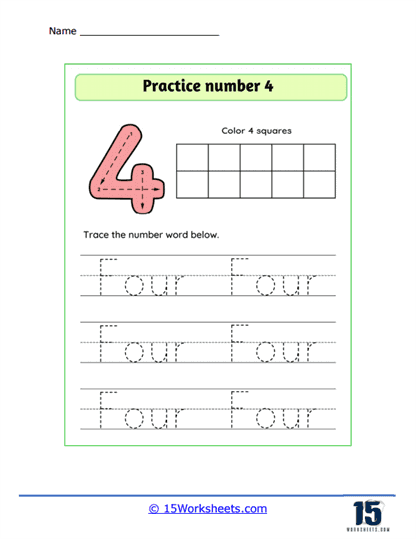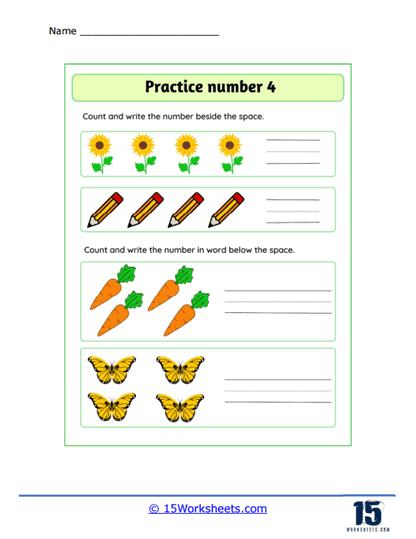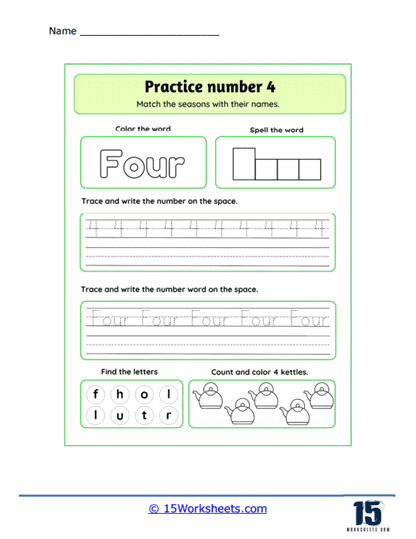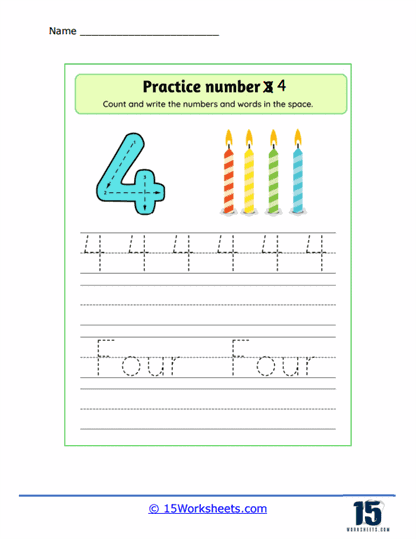Number 4 Worksheets
About These 15 Worksheets
Our number 4 worksheets were crafted specifically for young learners, particularly those in the early elementary grades, to facilitate their understanding and mastery of the concept of the number four. The goal of these worksheets is to help children grasp the fundamentals of counting, number recognition, basic arithmetic operations, and numerical relationships by focusing on the number four.
Primarily, these worksheets are designed to strengthen number recognition and understanding. They often contain activities where the child is required to identify the digit 4 among other numbers, and may also include tracing exercises for the number 4 to develop handwriting skills. It’s essential to realize that numeracy education at this age goes beyond mere memorization; it’s about helping the child understand what ‘four’ means. This understanding will be the foundation on which more complex mathematical skills are built.
They also focus on basic counting skills. One such activity might involve a page filled with pictures of various objects, some of which are grouped in sets of four. The child’s task would be to identify and count these groups. This helps them associate the abstract concept of ‘four’ with a tangible reality, making the learning experience more meaningful and concrete.
Apart from recognition and counting, these worksheets aim to familiarize students with the place of ‘four’ within the sequence of numbers. Activities might include ordering numbers, filling in missing numbers in a sequence, or recognizing ‘four’ in different numeral systems, such as tally marks or dice faces. Understanding the sequence is critical because it lays the groundwork for skills like estimation, comparing quantities, and eventually, understanding the base-ten system, which is fundamental to arithmetic.
You can use these sheets to introduce students to basic arithmetic operations: addition and subtraction. For instance, a child might encounter a problem like ‘1 + _ = 4’ or ‘4 – _ = 2,’ which encourages them to understand that different number combinations can result in the number four. These activities not only help children practice their counting skills but also begin to develop their problem-solving abilities and an understanding of numerical relationships.
We incorporate activities that involve shapes and patterns. For instance, students might be asked to identify shapes that have four sides, like a square or a rectangle, linking the number four with geometric concepts. Alternatively, they may work on simple repeating patterns, such as a sequence of pictures where every fourth picture is the same. This aids in cultivating a broader understanding of mathematics, where patterns and relationships are key.
Incorporating the number four into everyday life – counting four apples, jumping four times, or spotting the number 4 on a number plate – can reinforce what the child is learning in a more organic and meaningful way. After all, the ultimate goal is for children to understand numbers and their relationships, and be able to use this understanding flexibly in various contexts.

